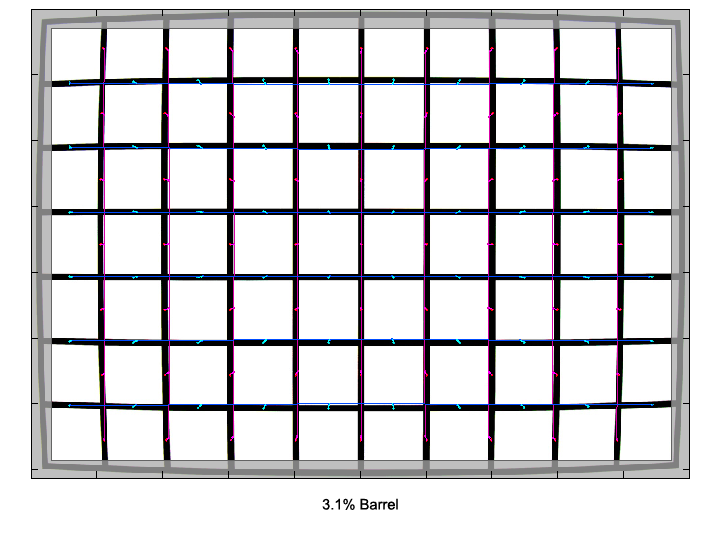|
Nikkor AF-S DX 10-24mm f/3.5-4.5G ED - Review / Test Report - Analysis |
|
Lens Reviews -
Nikon / Nikkor (APS-C)
|
|
Page 2 of 3

Distortion
10 mm is a rather extreme focal length and some barrel distortion is to be expected here. However, at 3.1% the Nikkor shows a fairly large amount of it, certainly more than the competition. The good news is that at longer focal lengths distortion is very well controlled at around or slightly above 0.5%, switching from barrel to pincushion distortion between 14 and 18 mm.
|
Move the mouse cursor over the focal length text marks below to observe the respective distortion
|
| 10mm |
14mm |
18mm |
24mm |
|

|
The chart above has a real-world size of about 120x80cm.
Vignetting
Lenses with reduced image circles designed for APS-C digital SLRs usually show slightly pronounced vignetting. This is not really the case here, allthough there's almost a 1 stop penalty wide open, the amont of vignetting is actually moderate for such a wide angle zoom.

MTF (resolution)
At 10mm, the lens delivers excellent center resolution straight from the maximum aperture. The borders follow closely behind with very good resolution across the tested aperture range. The extreme corners are a very different story, though. Wide open, the resolution is poor, but stopped down to f/8 the borders reach very good results, too.
At all other tested focal lengths, the lens delivers very good (wide open) to excellent (stopped down) resolution in the image center. Slightly stopped down to f/5.6, the borders and corners show very good resolution.
Please note that the MTF results are not directly comparable across the different systems!
Below is a simplified summary of the formal findings. The chart shows line widths per picture height (LW/PH) which can be taken as a measure for sharpness.
If you want to know more about the MTF50 figures you may check out the corresponding Imatest Explanations

Chromatic Aberrations (CAs)
Just like vignetting, CAs (color shadows at harsh contrast transitions) reach values of more than 2 pixels at the image borders at the short end of the zoom range. Zoomed in to the longest focal length, CAs are considerably lower. For a wide-angle zoom this is typical behaviour, even though the absolute CA values are a bit on the high side.
However, CAs can easily be corrected in software or by the camera itself (most modern Nikon DSLRs remove CAs themselves if you shoot JPGs).

|